The Bahamas, with its picturesque beaches and vibrant culture, has a hidden story that predates the arrival of European settlers. The Lucayan people, an offshoot of the larger Taino community, were the original inhabitants of the Bahamas and surrounding islands.
Their advanced society, deeply intertwined with nature, thrived through fishing, farming, and foraging.
Despite their tragic encounter with European colonizers, the remnants of Lucayan culture can still be found today. From their spiritual beliefs, rooted in nature worship and cyclical life cycles, to their influence on Bahamian art, craft, and language, the Lucayans’ rich heritage serves as a cultural bridge, connecting present-day Bahamians to their indigenous roots.
Join us on a journey beneath the surface as we delve into the fascinating Lucayan origins that continue to shape the cultural tapestry of the Bahamas.
Lucayan Origins
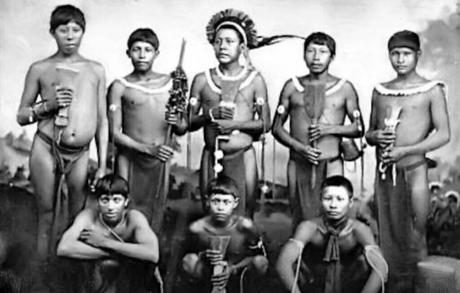
The Lucayan people, a branch of the larger Taino community, were the original inhabitants of the Bahamas and other islands in the Greater Antilles before the arrival of the Europeans. Their culture, sophisticated for its time, was deeply entwined with nature. They thrived on fishing, farming, and foraging, demonstrating a harmonious co-existence with their environment. Their society, while unassuming, was complex and organized, and their advanced skills in navigation and agriculture allowed them to sustain large populations on these islands.
Archaeological evidence suggests the Lucayans migrated northwards from the Caribbean around the 7th century AD, populating the Bahamian Archipelago. They established an intricate network of settlements across the islands, which they navigated using dugout canoes. The Lucayan people enjoyed a period of growth and prosperity for several centuries before the arrival of Christopher Columbus in 1492, an event that marked the beginning of a tragic end for the Lucayans.
Lucayan Beliefs and Practices
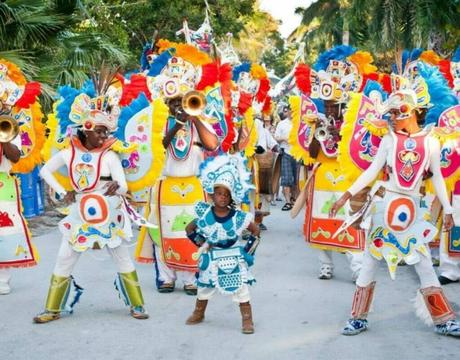
The Lucayans held deeply spiritual beliefs centered around nature, with a strong focus on the cyclical aspects of life and death. They believed in numerous deities that governed different aspects of nature and human life. They revered Yocahu, the god of cassava and the sea, and Atabey, the mother of Yocahu and goddess of freshwater and fertility. Their spiritual practices often involved the use of ritualistic items, dance, and music, creating a rich tapestry of spiritual expressions that connected them to the earth and their gods.
Unfortunately, much of the Lucayan’s spiritual practices and customs were lost or suppressed with the arrival of European colonizers. Yet, remnants of their beliefs have been unearthed through archaeological finds and have been woven into the folklore and traditional practices seen in modern Bahamian culture. From healing practices using local herbs to the belief in spirits and mythical creatures, traces of the Lucayan spiritual world can still be found.
Examples of Lucayan Beliefs and Practices:
- Deities and Nature Worship: The Lucayans believed in a pantheon of deities that governed various natural elements and phenomena. These deities were believed to have control over the sea, freshwater sources, agriculture, and fertility. Lucayans worshiped these deities through rituals, offerings, and prayers, seeking their blessings and protection.
- Ritualistic Items: The Lucayans utilized ritualistic items in their spiritual practices. These items included ceremonial objects, amulets, and artifacts made from natural materials like shells, bones, and stones. They were used in religious ceremonies and believed to hold spiritual significance and powers.
- Dance and Music: Dance and music played an integral role in Lucayan spiritual practices. They used rhythmic movements and melodies to connect with their deities and invoke their presence. These forms of expression were not only a means of worship but also a way to celebrate and honor the natural world.
- Healing Practices: The Lucayans had a deep understanding of medicinal plants and their healing properties. They used local herbs and natural remedies to treat ailments and promote well-being. These healing practices have been passed down through generations and continue to be part of the traditional medicine practices in the Bahamas.
- Spirits and Mythical Creatures: The Lucayans believed in the existence of spirits and mythical creatures. They believed that spirits could dwell in natural elements like trees, rocks, and bodies of water. These spirits were both benevolent and malevolent, and rituals were performed to appease and communicate with them.
- Folklore and Traditional Practices: Although much of the Lucayan spiritual practices were lost or suppressed, remnants of their beliefs can still be found in the folklore and traditional practices of the Bahamas. Stories, legends, and customs passed down through generations contain echoes of Lucayan spirituality, providing glimpses into their rich cultural heritage.
By uncovering and preserving remnants of Lucayan beliefs and practices, modern Bahamians strive to honor their ancestors and maintain a connection to their spiritual roots. These efforts ensure that the legacy of the Lucayans continues to shape and inspire the cultural identity of the Bahamas today.
Cultural Lucayan Traces in Modern Bahamas

Despite the decimation of the Lucayan people following European colonization, their influence persists in Bahamian culture today. Their knowledge of local flora and fauna influenced Bahamian cuisine, which incorporates native ingredients like the versatile cassava and abundant seafood. Traditional Bahamian dishes like ‘fire engine’ (corned beef and grits) or ‘souse’ (a type of meat stew) mirror the Lucayans’ resourceful cooking methods.
Bahamian art and craft also exhibit Lucayan influences. Straw weaving, one of the most popular craft traditions in the Bahamas, has roots in Lucayan culture. Similarly, the construction of traditional Bahamian sloops mirrors the dugout canoes used by the Lucayans. These practices are not mere historical footnotes, but living traditions that connect the Bahamian people to their indigenous heritage.
Lucayan Influence on Bahamian Art and Craft
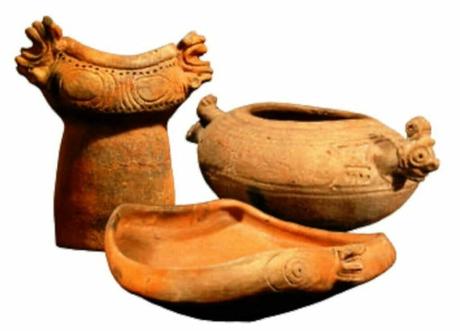
The art and craft of the Lucayans were deeply reflective of their intimate connection with their environment. Utilizing materials from their surroundings, they created pottery, jewelry, and tools, each piece resonating with their understanding of nature. The Lucayans excelled in ceramics, and their pottery often featured intricate designs and carvings representing their spiritual beliefs and cosmology.
This artistic tradition has influenced modern Bahamian art and craft in various ways. The art of straw weaving, for example, is a direct descendant of Lucayan craft techniques. Moreover, motifs inspired by Lucayan art often feature in contemporary Bahamian visual arts, and many local artists pay homage to their Lucayan heritage in their works. These artistic expressions serve as a cultural bridge, linking present-day Bahamians with their Lucayan ancestors.
Examples of Lucayan Influence on Art and Craft:
- Straw Weaving: The art of straw weaving in the Bahamas is a direct descendant of Lucayan craft techniques. The Lucayans used straw to create intricate baskets, hats, and mats. Today, Bahamian artisans continue this tradition, producing beautiful straw crafts that reflect the influence of Lucayan techniques.
- Motifs in Contemporary Bahamian Visual Arts: Many contemporary Bahamian artists draw inspiration from Lucayan art motifs in their works. These motifs, such as geometric patterns, animal representations, and symbols of the natural world, are incorporated into paintings, sculptures, and mixed media pieces, creating a visual connection between the past and the present.
- Cultural Homage: Local artists in the Bahamas often pay homage to their Lucayan heritage through their artistic expressions. They explore Lucayan themes, stories, and spiritual beliefs, infusing them into their artwork. This not only preserves the cultural heritage but also helps to create a sense of identity and continuity for present-day Bahamians.
- Traditional Pottery Techniques: The techniques used by the Lucayans in pottery making continue to influence modern ceramic art in the Bahamas. Artists incorporate the knowledge passed down through generations to create unique pottery pieces that reflect the aesthetics and craftsmanship of the Lucayans. These works serve as a tribute to the artistic legacy of the Lucayans.
- Natural Materials and Sustainability: The Lucayans’ use of natural materials in their art and craft has inspired modern Bahamian artists to adopt sustainable practices. Artists explore local resources, such as shells, wood, and plant fibers, to create eco-friendly artworks that align with the Lucayan ethos of living in harmony with nature.
- Cultural Bridge: The artistic expressions influenced by the Lucayans serve as a cultural bridge, connecting present-day Bahamians with their Lucayan ancestors. Through art and craft, the legacy of the Lucayans is preserved and celebrated, fostering a deeper appreciation for the rich cultural heritage of the Bahamas.
By embracing the artistic traditions of the Lucayans and incorporating them into contemporary art and craft, the Bahamas pays tribute to its roots and ensures that the cultural legacy of the Lucayans continues to thrive in the modern world.
Language and Linguistic Influences
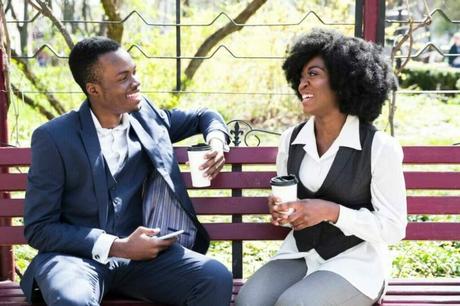
Though the Lucayan language, a variant of the Arawakan language family, was not preserved due to European colonization, it left indelible marks on the linguistic landscape of the Bahamas. Place names throughout the archipelago echo the Lucayan language. Islands such as Bimini, Inagua, and Abaco all carry names derived from Lucayan words.
Modern Bahamian English also retains elements of Lucayan linguistic influences, often in the form of local colloquialisms and slang. The word ‘bey’, a common term used to refer to a person in Bahamian dialect, is believed to have Lucayan origins. The language’s influence, though largely overlooked, is a testament to the Lucayans’ enduring legacy on Bahamian culture and identity.
Lucayan Cultural Influence FAQ
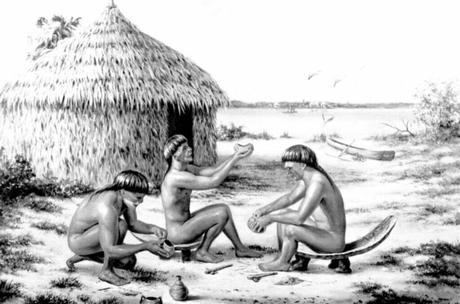
What Were The Beliefs Of The Lucayans?
The Lucayans held deeply spiritual beliefs centered around nature, worshipping a pantheon of deities that governed various natural elements and phenomena. They revered Yocahu, the god of cassava and the sea, and Atabey, the mother of Yocahu and goddess of freshwater and fertility. Lucayans conducted rituals, made offerings, and practiced dance and music to connect with their deities and maintain harmony with the natural world.
Why Is It Important That We Study The Lucayans?
Studying the Lucayans is crucial for understanding the rich cultural heritage of the Bahamas and the Caribbean region. Their civilization, advanced for its time, offers insights into indigenous societies, environmental sustainability, and spiritual beliefs. By recognizing and studying the Lucayans, we gain a deeper appreciation for their contributions, preserve their legacy, and foster a more inclusive and comprehensive understanding of the history of the Americas.
What are the Lucayan people now?
The Lucayan people faced tragic consequences following European colonization, including enslavement, disease, and forced assimilation. Today, the Lucayan people, as a distinct ethnic group, no longer exist. However, their legacy lives on in the cultural traditions, art, craft, and place names of the Bahamas. Modern Bahamians with Lucayan ancestry carry their heritage, keeping the memory of the Lucayans alive and ensuring their contributions continue to shape the cultural identity of the Bahamas.

